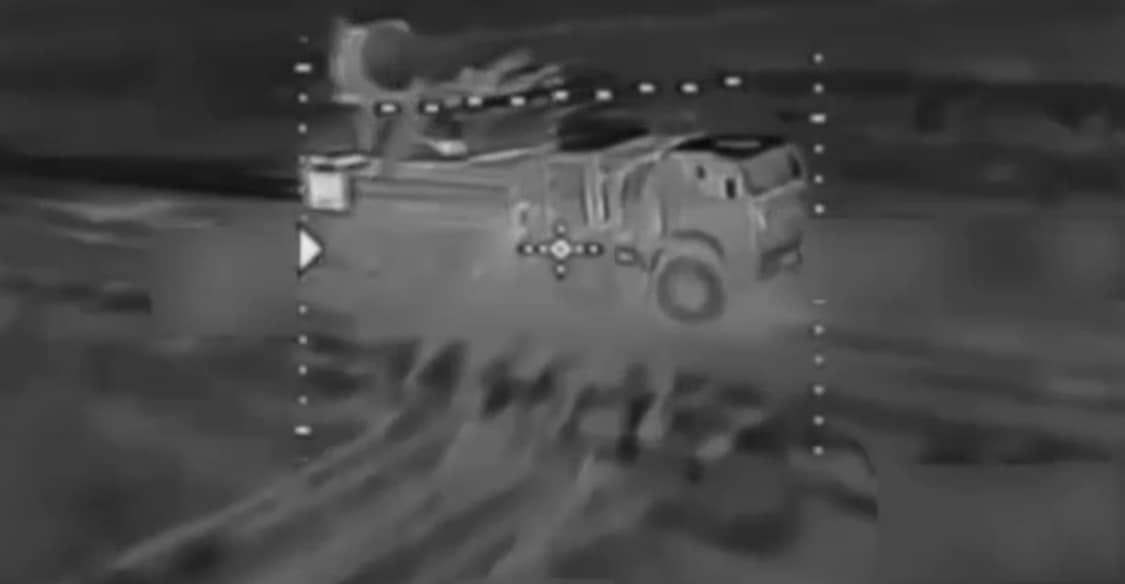The Ukrainian Navy achieved a significant milestone on 6 January, using a sea drone to launch an FPV drone strike on a Russian Pantsir-S1 surface-to-air missile and anti-aircraft artillery system. The operation, near Crimea, marks the first documented case of an FPV drone being deployed from a naval drone to target coastal installations.
Footage shared by the Ukrainian Navy showed the Pantsir-S1's radar actively rotating at the time of the strike, indicating the system was operational during its engagement.
The system, designed to intercept drones and other aerial targets at the close range, was hit while stationed in a combat position, and the system failed to react to the approaching drone.
Navy confirms multiple air defense strikes
Ukrainian Navy Commander Oleksii Neyizhpapa, who initially shared the video, commented on Facebook:
“Minus two Pantsirs in Kherson. Our warriors continue turning Russian equipment into scrap metal. Thank you for your work!”
Later the same day, the Navy updated its report, stated that three Russian air defense systems were destroyed or damaged within 24 hours, including two Pantsir-S1s, and one Osa system.
“Ukrainian naval forces, along with other defense components, continue destroying the enemy on land, at sea, and in the air,” the Navy’s statement emphasized.
Targeted strike deep in Russian-held territory
One of Russian sources claimed that the documented FPV strike occurred near Pryvillia in Kerson Oblast's occupied Skadovsk district. The settlement is situated approximately 70 kilometers behind Russian lines and close to the Crimean Isthmus, which is far beyond the range of the FPV drones.
While the Navy has not officially confirmed details of the operation, Pryvillia is located just 6 kilometers from the sea, suggesting the use of a naval drone as an FPV carrier.
This aligns with earlier Ukrainian Navy's demonstration of FPV drones launched from a maritime drone against Russian troops on a captured gas platform in the Black Sea.
Ukrainian military officer Petro Shuklinov called the operation a “historic event,” noting the expanded tactical capabilities of sea drones.
“This significantly changes the prospects of drone use against Russians in occupied territories and the overall logic of warfare at sea and on land,” he stated.
Trending Now
Implications of the strike
The FPV video footage does not confirm the extent of the damage, as FPV kamikaze drones self-destruct upon impact. Militarnyi, a military analysis outlet, noted that while immediate destruction of the Pantsir-S1 is unlikely, the strike may have caused critical damage or a fire, potentially incapacitating the system.
Militarnyi added that the Pantsir-S1’s operator compartment that was targeted by the attack, though armored, is vulnerable to cumulative munitions frequently used by FPV drones.
Russia's Pantsir-S1 losses
Pantsir-S1 strikes by drones have occurred previously, including two cases in early 2024 using Warmate drones. Such strikes remain rare due to the system’s frequent placement in rear areas for the protection of critical infrastructure.
According to Oryx, the confirmed military losses monitoring project, Russia has lost 27 Pantsir-S1 systems since the start of the invasion, with 22 destroyed, three damaged, and two captured by Ukrainian forces. The most recent successful strike before this operation was recorded in August 2024 by Ukraine’s 140th Separate Reconnaissance Battalion, which destroyed a Pantsir-S1 in Kherson Oblast.
Related:
- Ukrainian intelligence eliminates Russian battalion commander in southern Ukraine (video)
- Fire engulfs Smolensk oil depot in Russia after alleged drone strike (video)
- Ukraine’s Defense Ministry greenlights over 1,300 military equipment items in 2024
- Defense Express: Modified Soviet-era missile enables maritime drone’s aerial capabilities
- Ukrainian sea drone downs Russian helicopter in historic first (video)
- Russia stockpiles missiles, drones for new energy strikes despite Ukraine’s counter strikes
- Forbes: Dual-shotgun drones join Ukraine’s counter-drone arsenal
- Ukrainian company assembles first fully domestic FPV drone
- Ukraine's "Sea Baby" marine drones, armed with heavy-caliber machine guns, damage Russian helicopters near Crimea

